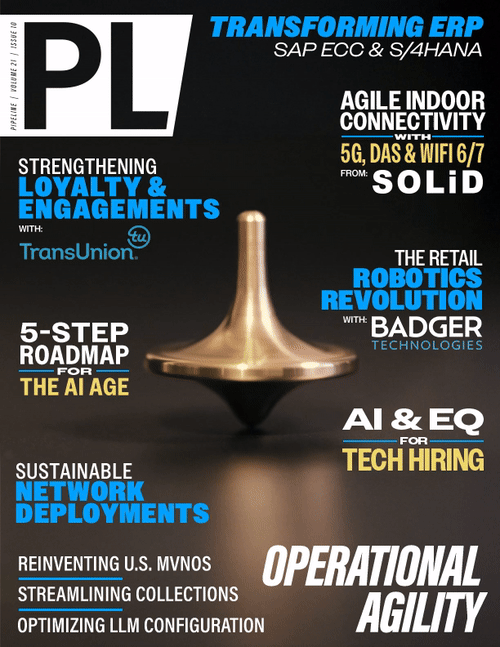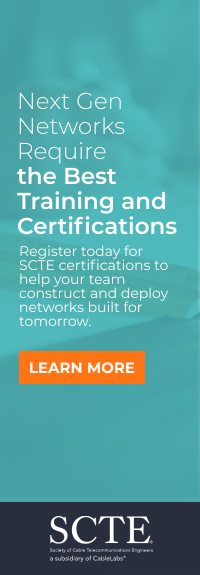By: Scott St. John - Pipeline

Agility is the ability to successfully navigate challenging environments with grace—the ability to react and adapt to change rapidly. Now, if you were an acrobat or antelope, this may be more or
less a solo sport. But if you’re an organization trying to achieve operational agility, it’s a bit more complicated. Organizations must orchestrate people and technology in unison and in tempo to
succeed. And that’s where things tend to go wrong.
The very concept of an organization is a little too reductive. Organization implies a singular thing, an entity. But organizations, and in this case, businesses, are a sum of many complicated,
different, and disparate parts and subparts. Take, for example, people. On the one hand, you have employees. Each person is unique and possesses specific skills. Each also has their
own aspirations, capabilities, knowledge, and limitations. On the other hand, you have customers, each one with their own needs, preferences, and expectations. Now multiply this by the dozens,
hundreds, or thousands of employees and customers a business may have. It gets complicated quickly.
Technology can help businesses efficiently empower employees and streamline operations in concert with each other. In other cases, such as in Internet of Things (IoT) and robotics use cases,
technology can assist, complement, or even replace people. This is changing the workforce, which can make hiring, training, and retaining the right people a little tricky. But having the right
people in the right roles, particularly when customer relationships get difficult, is more important than ever. When people fail, the business fails.
Then there is the little matter of the business itself. Each business is a part of an ecosystem within an industry. As the industry evolves, it must transform and embrace innovation to remain
both relevant and competitive. Think Blockbuster versus Netflix. Here, embracing technical advancements is pivotal. And there hasn’t been a more transformative technology shift underway since the
dawn of the Internet Age, around the same time Netflix shifted from shipping DVDs and VHS tapes to streaming. I am, of course, talking about the impact of Artificial Intelligence
(AI).
AI is a reality today, and tangible AI applications are extending further seemingly every day. Every business must now have an AI roadmap at the board level. It’s not an option, it’s an
imperative. Not having an AI strategy now is like sitting in Blockbuster’s board meeting, talking about how the Internet is just a fad. But that doesn’t mean you can adopt AI with reckless
abandon. AI initiatives should be carefully selected and incrementally implemented. To start, organizations should evaluate which AI use cases are feasible today based on the degree of accuracy
of performing a function – such as automation – and map that to the biggest impact areas with the highest Return-On-Investment (ROI). This enables businesses to select the AI implementation areas
with the highest probability of success and achieve the highest return with the lowest risk. But having an AI strategy alone isn’t enough.
Coordinating systems and connectivity is another key consideration in creating and bolstering operational agility. Complex businesses have a variety of systems – spanning Billing, Customer
Relationship Software (CRM), to Enterprise Resource Planning (ERP), to network management, and more. Some organizations have dozens of each, inherited through decades of mergers and acquisitions.
Integrating them is vital to operational agility, but transforming them can be a herculean task, and ripping and replacing them entirely is not an option. But waiting to transform can be a costly
mistake. At the same time, the push to fully autonomous enterprises, IoT, and Industry 4.0 use cases is causing agile enterprises to rethink their underlying connectivity strategy.
On an industry level, billions of devices must be connected and managed. Businesses must select the right connectivity for their specific needs and applications, and there is no shortage of
choices. For IoT connectivity, millions of Subscriber Identity Modules (SIMs) and eSIMs must be programmed, activated, and managed. Then there’s the challenge of providing ubiquitous and
continuous connectivity to them, both inside and out. Networks have to be designed and deployed, and with energy and sustainability in mind.
Operational agility today means possessing all of these things: the right people, technology, and connectivity. It means having an AI strategy that helps automate and integrate your networks and
systems across the entire organization. It means empowering your people with the right tools to create operational efficiency and maximize value. It means getting started now with a roadmap that
gets you there. And that’s what makes this edition of Pipeline so important.
In this issue of Pipeline, we examine how to achieve operational agility. Mobileum provides a five-step operational roadmap
for AI transformation. Dr. Mark Cummings walks us through LLM selection and configuration for Agentic AI. Interactive EQ
shows us how AI is being used for emotional intelligence quotient (EQ) assessment to revolutionize tech hiring. TransUnion
demonstrates how to strengthen brand loyalty, customer engagements, and retention. Provenir shows us how to simultaneously
streamline collections and preserve customer relationships. enosix tells us how calls centers don’t have to wait for SAP S/4HANA
to transform their ERP systems and streamline operations. Badger Technologies spotlights the mobile autonomous retail robot revolution. Lifecycle Software illustrates how cloud-native platforms, eSIMs, and changing regulations
can help U.S. MVNOs reinvent themselves. SOLiD Americas examines how to create agile indoor edge connectivity with 5G, DAS, and Wi-Fi 6 & 7. ACOME underscores the importance of sustainable network construction and fiber deployments. All this, plus the latest enterprise IT and
telecommunications industry news and more.
We hope you enjoy this and every issue,
Scott St. John
Managing Editor
Pipeline
Follow on X | Follow on LinkedIn | Follow Pipeline




















